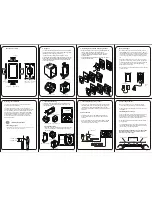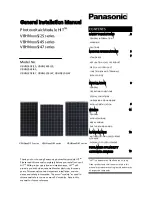
Secure the red wire to the B terminal on the regulator. Connect the other end of
the red wire to the positive (+) battery terminal. If a deep cycle marine battery is being
used, attach the red wire to the CHARGE terminal on the battery terminal bus attached to
the positive (+) battery terminal instead.
With the battery connected and no solar panel input, the green LED on the regulator
marked CHARGING STATUS should not be lit. A brief green flash every five seconds is okay.
4. Connect the black wire from the solar panel power cable to the SOLAR – terminal on the
regulator. Connect the red wire from the solar panel power cable to the SOLAR + terminal
on the regulator. Refer to the MorningStar SunSaver manual to determine if the jumper
between the LOAD – and Remove Jumper for Flooded Battery terminals needs to be
removed.
5. If charge current is available from the solar panel, the green LED on the regulator marked
GREEN: Charging will light up. This verifies proper operation and wiring of the regulator.
6. To supply power to the system, connect the red wire from the data logger to the LOAD +
terminal on the voltage regular and the black wire from the data logger to the LOAD –
terminal on the voltage regulator. If a deep cycle marine battery is being used, connect the
red wire from the data logger to the battery terminal bus LOAD terminal on the positive (+)
battery terminal and connect the black wire from the data logger to the battery terminal
bus LOAD terminal on the negative (–) battery terminal instead.
NOTE:
Morningstar SunSaver regulators ship with the jumper INSTALLED. Refer to the
MorningStar SunSaver manual to determine if the jumper between the LOAD – and
Remove Jumper for Flooded Battery terminals needs to be removed.
4. Maintenance
Occasional glass cleaning improves solar panel efficiency. Use a soft sponge and warm water
with a small amount of dishwashing detergent to gently clean the solar panel of any dust, grime,
or bird droppings. Use a soft, dry cloth or squeegee to remove any residual water from the panel.
If a problem with the solar panel is suspected, check the panel by measuring the voltage output.
Check the voltage with a voltmeter connected between the two wires from the solar panel. There
must be solar radiation incident on the panel and there must be a load connected to the solar
panel. The load can be a data logger, other equipment, or a 75 ohm resistor capable of
SP50-L, SP90-L, and SP305-L Solar Panels
25







































